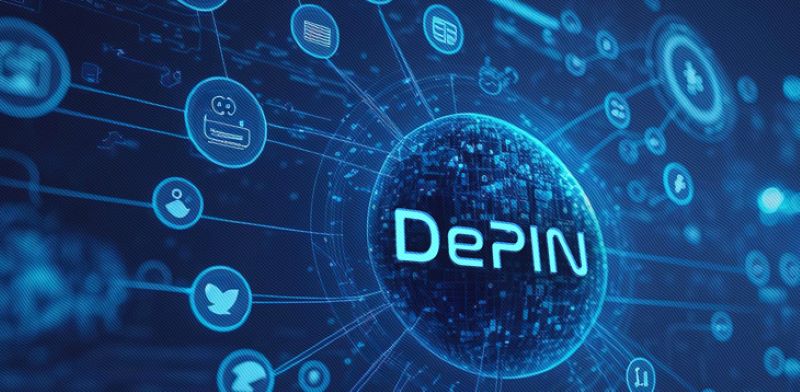The Depin business model represents a revolutionary approach to community-owned infrastructure, redefining how we think about collaborative ownership and operational efficiency. At its core, the Depin business model leverages decentralized principles to empower communities to invest in and manage infrastructure projects collectively. This model not only promotes greater transparency and accountability but also ensures that the benefits of such projects are shared among all stakeholders. By focusing on community ownership, the Depin business model aims to create a more inclusive and sustainable framework for infrastructure development, challenging traditional paradigms and paving the way for a new era of cooperative and resilient community investment.
Definition and Significance of Depin
Depin (Decentralized Private Infrastructure Network) is an emerging business and technology model focused on developing and managing decentralized infrastructure that is owned and operated by the community. Depin combines the principles of blockchain technology and decentralized organization to create an infrastructure network where assets and resources are distributed and managed by individuals and organizations within the community, rather than being centralized in a single entity.
The significance of Depin includes the following:
- Enhancing Independence and Transparency: By using blockchain technology, Depin ensures that transactions and asset management are recorded transparently and immutably. This increases trust and reduces the risk of fraud.
- Encouraging Community Participation: Depin business model encourages community members to actively participate in the development and management of infrastructure. The community can invest, decide, and benefit from infrastructure projects, ensuring that benefits and responsibilities are distributed fairly.
- Creating Innovative Investment Opportunities: Depin opens up opportunities for small investors and local organizations to participate in large infrastructure projects that were previously accessible only to large corporations or government investors.
- Improving Sustainability and Innovation: Distributing ownership and management of infrastructure to the community enhances the sustainability of projects while fostering innovative approaches to infrastructure development and operation.
- Reducing Costs and Increasing Efficiency: This model helps reduce management and operational costs by eliminating intermediaries and minimizing the need for centralized authorities, thereby increasing efficiency and optimizing resources.
How the Depin Business Model Operates
The operation of the Depin Business Model can be summarized as follows:
Distributing Ownership and Management:
- Community Ownership: In the Depin model, infrastructure is owned by the community rather than centralized organizations. Community members can invest in and own parts of the infrastructure, such as assets, equipment, or services.
- Voting Rights: Investors or members who own infrastructure have the right to participate in important decisions through voting mechanisms. Voting rights are typically distributed based on the proportion of ownership or contribution of each individual.
Utilizing Blockchain Technology:
- Transparency and Security: Blockchain technology is used to record all transactions and infrastructure management decisions transparently and immutably. This ensures that information and management processes are public and secure.
- Resource Management: Blockchain provides a distributed ledger that allows for the efficient tracking and management of resources and assets within the system.
Generating Revenue and Profit:
- Profit Sharing: Revenue from infrastructure, such as service usage fees or asset rentals, is distributed among community members based on ownership proportions or specific agreements.
- Investment Incentives: Innovative financial models like asset tokenization can be used to incentivize investment and create value for investors and users.
Community Participation and Management:
- Project Management: Infrastructure projects are managed by community groups or local organizations, rather than centralized authorities. This encourages community involvement in developing and maintaining the infrastructure.
- Innovation and Improvement: The community can participate in proposing and implementing improvements and innovations for the infrastructure, thereby enhancing efficiency and responsiveness to needs.
Integrating New Technologies:
- Application of New Technologies: The Depin business model can integrate new technologies such as the Internet of Things (IoT) or artificial intelligence (AI) to optimize infrastructure management and operation, thus increasing efficiency and reducing costs.
Future Opportunities of the Community-Owned Infrastructure Model
The community-owned infrastructure model is poised for strong development in the current context.
- Increased Focus on Sustainability: As environmental issues and sustainability gain more attention, the community-owned infrastructure model addresses this need by minimizing the negative impact of large corporations’ activities. Communities can implement green infrastructure solutions, use renewable energy, and adopt environmentally friendly practices, contributing to sustainable development.
- Growth of Blockchain Technology: Blockchain technology provides an ideal platform for the community-owned infrastructure model due to its transparency and decentralization. The use of blockchain enhances transparency in asset management, protects ownership rights, and facilitates effective collaboration among community members. The development of this technology opens up many opportunities to realize new infrastructure models.
- Strengthening Economic Independence: As reliance on large corporations and governments becomes a growing concern, the community-owned infrastructure model allows communities to become more economically self-sufficient. This reduces dependency on external financial sources and increases the community’s ability to adapt to its specific needs and conditions.
- Encouraging Innovation and Creativity: Depin business model fosters innovation and creativity as communities are free to develop new infrastructure solutions, experiment with technology, and improve operations. The autonomy in managing and developing infrastructure opens up opportunities for unique and more efficient solutions.
- Better Policy and Regulatory Support: Many governments and organizations are looking for alternative models to improve infrastructure management efficiency. The community-owned infrastructure model can receive support through policies and regulations that encourage the development of such models. Policy support can facilitate the expansion and growth of this model.
- Enhanced Community Participation: More people are becoming interested in participating in community projects and contributing to shared development. The community-owned infrastructure model attracts active participation from individuals and groups within the community, thereby increasing engagement and responsibility in managing and operating infrastructure.
- Expanding Market Potential: The growing demand for sustainable and self-sufficient infrastructure solutions in sectors such as energy, transportation, and water management has opened up significant market potential for community-owned infrastructure models. Tapping into and developing opportunities in this market can bring substantial economic benefits to communities and investors.
- Creating New Business Models: Depin business model is not only a new approach to owning and operating infrastructure but also creates opportunities for developing innovative and sustainable business models. Businesses and organizations can leverage this model to develop new services and products, expand markets, and increase revenue growth.
The Depin business model represents a transformative approach to infrastructure management by embracing the concept of community ownership. This model not only empowers communities to take charge of their own infrastructure needs but also fosters greater transparency, sustainability, and economic resilience. By leveraging decentralized technologies and collective governance, Blockchainbulletinweekly believes that Depin business model paves the way for more inclusive and adaptable infrastructure solutions. As communities increasingly seek to regain control over their resources and drive innovation from within, the Depin business model stands out as a pivotal framework for achieving these goals and shaping the future of community-centric infrastructure.



